 2003 Toyota 4Runner IV Dimensions, Size & Specs
2003 Toyota 4Runner IV Dimensions, Size & SpecsMeasurements of the 2003 Toyota 4Runner IV, engineered for optimal performance and comfort
| Dimensions | |
|---|---|
| Length: | 4800 mm189.0 in15.7 ft |
| Width: | 1875 mm73.8 in6.2 ft |
| Height: | 1755 mm69.1 in5.8 ft |
| Ground Clearance: | 226-231 mm8.9-9.1 in0.7-0.8 ft |
| Trunk Capacity: | 1195 liter42.2 cu ft |
| Trunk Capacity (Max): | 2050 liter72.4 cu ft |
| Weight Specifications | |
| Curb Weight: | 1825-2043 kg4023-4504 lbs |
| Maximal permitted Weight: | 2322-2724 kg5119-6005 lbs |
| Tire Specifications | |
| Rims Sizes: | 16-inch rims:
|
| Tire Sizes: |
|
The Toyota 4Runner IV, produced from 2002 to 2005 and marketed as the 2003 model year, is a versatile midsize SUV designed for both urban driving and off-road adventures. This fourth-generation 4Runner boasts an overall length of 4800 mm (189 inches), a width of 1875 mm (73.8 inches), and a height ranging from 1750 mm to 1755 mm (68.9 to 69.1 inches), providing a spacious and commanding presence on the road.
Weighing between 1825 kg and 2043 kg (4,023 to 4,503 lbs) depending on the trim and configuration, the vehicle offers a robust build while maintaining agility. Its maximum permissible weight ranges widely from 2322 kg to 2724 kg (5,120 to 6,005 lbs), accommodating passengers and cargo efficiently.
The 4Runner IV features impressive cargo capacity with 1195 liters (42.2 cubic feet) of luggage space behind the rear seats, expandable to 2050 liters (72.3 cubic feet) when the rear seats are folded flat. This flexibility makes it suitable for long trips and hauling a variety of gear.
Ground clearance is a notable feature for off-road capabilities, measuring between 226 mm and 231 mm (8.9 to 9.1 inches), allowing the 4Runner to navigate rough terrains with ease. The SUV rides on sturdy 7.0J x 16 or 7.5J x 17 rims fitted with tires sized 265/70 R16 or 265/65 R17 respectively, striking a balance between road grip and comfort.
Overall, the Toyota 4Runner IV from the early 2000s remains a reliable choice for those seeking a durable SUV with ample interior space, solid construction, and respectable off-road features.
Discover the standout features that make the 2003 Toyota 4Runner IV a leader in its class
Have a question? Please check our knowledgebase first.
The Toyota 4Runner IV produced between 2002 and 2005 measures 4800 mm (188.98 inches) in length, making it a substantial mid-size SUV. It has a width of 1875 mm (73.82 inches), providing a broad stance for stability and interior space. The height varies slightly between 1750 mm to 1755 mm (68.90 to 69.09 inches), depending on specific trim and suspension setup. These dimensions give the 4Runner IV a commanding presence on the road while offering spacious seating and cargo capacity internally.
The Toyota 4Runner IV has a curb weight ranging from 1825 kg to 2043 kg (approximately 4025 to 4504 pounds), depending on trim levels and equipment. Curb weight refers to the vehicle's weight without passengers or cargo but with a full tank of fuel. The maximum weight, or gross vehicle weight rating (GVWR), ranges from 2322 kg to 2724 kg (5118 to 6006 pounds), which includes passengers, cargo, and any additional equipment. This weight distribution ensures the 4Runner is robust enough for rugged terrain and heavy loads, maintaining safety and performance.
The Toyota 4Runner IV offers a generous luggage capacity of 1195 liters (around 42.2 cubic feet) behind the rear seats, suitable for everyday storage needs such as groceries, sports equipment, or luggage. When the rear seats are folded down, this capacity significantly increases to 2050 liters (approximately 72.4 cubic feet), allowing for the transportation of larger items, bulky gear, or increased cargo volume for road trips and outdoor activities. This flexible cargo space is one of the highlights of the 4Runner, catering to both practical family use and adventurous trips.
The Toyota 4Runner IV features a ride height, or ground clearance, ranging from 226 mm to 231 mm (8.9 to 9.1 inches), which is considered excellent for mid-size SUVs. This substantial ground clearance enables the 4Runner to navigate uneven terrain, rocky paths, and obstacles with ease, making it well-suited for off-road adventures and rugged conditions. Higher ground clearance minimizes the risk of undercarriage damage and improves approach, departure, and break-over angles, thereby enhancing the vehicle’s off-road performance and versatility.
With a length of 4800 mm (189 inches), width of 1875 mm (74 inches), and height just under 1755 mm (69 inches), the Toyota 4Runner IV is relatively large but typically fits into a standard single-car residential garage. Most standard garages are around 6 meters (20 feet) in length and about 2.4 to 2.7 meters (8 to 9 feet) wide, which accommodates the 4Runner comfortably. However, owners should ensure enough clearance not only for parking but also for opening doors and maneuvering, especially if the garage is narrower or more compact than average.
Compared to the 3rd generation 4Runner (1995-2002), the 4Runner IV (2002-2005) is larger in every key dimension. The IV generation stretches about 4800 mm (189 inches) in length, whereas the 3rd generation was approximately 4575 mm (180 inches) long. It is also wider (1875 mm versus about 1795 mm) and slightly taller (1750-1755 mm compared to about 1750 mm). This increase in size translates to more interior space, greater cargo capacity, and improved ride comfort, representing a significant evolution in the 4Runner’s design and utility tailored to modern SUV market demands.
The Toyota 4Runner IV is competitive among mid-size SUVs of its time, featuring a length of 4800 mm (189 inches), a width of 1875 mm (74 inches), and height around 1750 mm (69 inches). Compared to rivals like the Jeep Grand Cherokee or Ford Explorer from the early 2000s, the 4Runner is generally similar in length but often taller and wider, emphasizing ruggedness and off-road capability. Its generous cargo volume and ground clearance further distinguish it as a versatile SUV capable of both daily urban driving and serious off-road performance.
The Toyota 4Runner IV typically comes equipped with rim sizes of 7.0J x 16 inches or 7.5J x 17 inches, depending on the trim and package options. Recommended tire sizes include 265/70 R16 and 265/65 R17, which provide a good balance between road comfort, off-road traction, and vehicle stability. These tires and rims contribute to the robust handling characteristics and toughness expected from the 4Runner IV. Proper tire maintenance and selection are crucial for optimizing safety, fuel economy, and performance especially in different driving conditions.
The 4th generation Toyota 4Runner (2002-2005) introduced a more refined, modern design with increased interior space and elevated comfort. It improved on previous generations with enhanced safety features, including optional side airbags and anti-lock brakes. The vehicle’s rugged body-on-frame construction remained ideal for off-road durability. Mechanically, engine and suspension upgrades provided better performance and ride quality. The interior was designed with more ergonomic controls and improved materials, positioning the 4Runner IV as a versatile SUV that balances everyday usability with strong off-road capability.
The curb weight of the Toyota 4Runner IV ranges from 1825 kg to 2043 kg (around 4025 to 4504 lbs) based on the trim level and equipment. Lower trims tend to be lighter due to fewer luxury features and simpler suspension components, while higher trims with more amenities and off-road enhancements can add additional weight. This weight variation affects fuel efficiency, acceleration, and handling characteristics slightly but also reflects the versatile nature of the 4Runner capable of serving different driver needs and preferences.
Discover similar sized cars.

| Production: | 2022-present |
|---|---|
| Model Year: | 2022 |
| Length: | 4769 mm187.8 in |
| Width: | 1859 mm73.2 in |
| Height: | 1698 mm66.9 in |
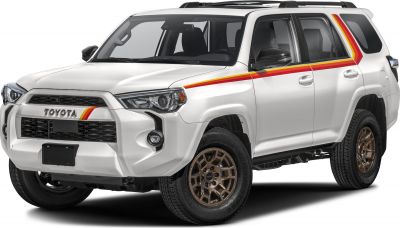
| Production: | 2013-2024 |
|---|---|
| Model Year: | 2014 |
| Length: | 4831 mm190.2 in |
| Width: | 1925 mm75.8 in |
| Height: | 1816 mm71.5 in |
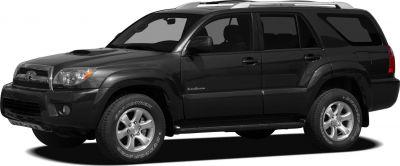
| Production: | 2005-2009 |
|---|---|
| Model Year: | 2006 |
| Length: | 4805 mm189.2 in |
| Width: | 1910 mm75.2 in |
| Height: | 1760 mm69.3 in |
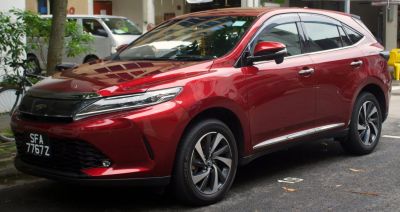
| Production: | 2017-2020 |
|---|---|
| Model Year: | 2017 |
| Length: | 4725 mm186.0 in |
| Width: | 1835 mm72.2 in |
| Height: | 1690 mm66.5 in |

| Production: | 2007-2013 |
|---|---|
| Model Year: | 2008 |
| Length: | 4785 mm188.4 in |
| Width: | 1910 mm75.2 in |
| Height: | 1760 mm69.3 in |
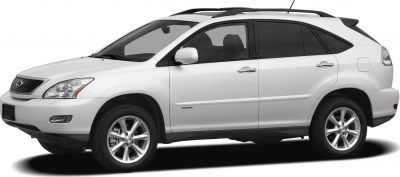
| Production: | 2003-2009 |
|---|---|
| Model Year: | 2004 |
| Length: | 4729-4760 mm186.2-187.4 in |
| Width: | 1845 mm72.6 in |
| Height: | 1679-1705 mm66.1-67.1 in |

| Production: | 2021-2024 |
|---|---|
| Model Year: | 2021 |
| Length: | 4728 mm186.1 in |
| Width: | 2099 mm82.6 in |
| Height: | 1661-1688 mm65.4-66.5 in |
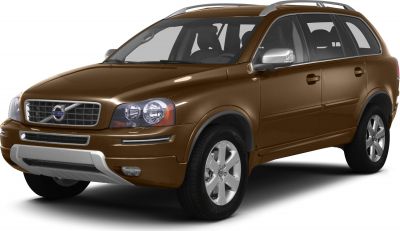
| Production: | 2007-2014 |
|---|---|
| Model Year: | 2007 |
| Length: | 4798-4807 mm188.9-189.3 in |
| Width: | 1898-1936 mm74.7-76.2 in |
| Height: | 1743-1784 mm68.6-70.2 in |
